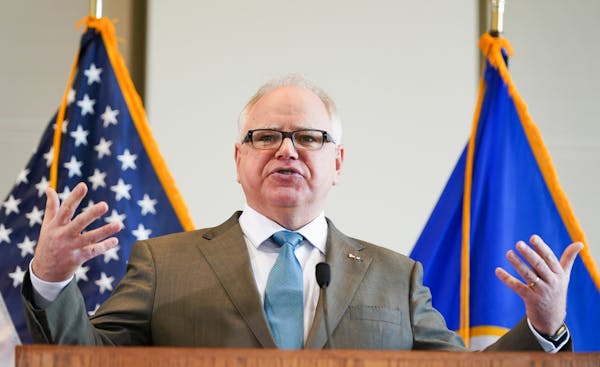Minnesota's COVID-19 case count jumped to 115 with 26 new infections announced Friday as state officials grappled with the logistics of obtaining testing materials and health care supplies.
It is the biggest one-day increase in confirmed case numbers since COVID-19 testing began in the state, but it is unclear when these newly reported cases were infected. It can take up to two weeks for disease symptoms to develop.
COVID-19 illnesses are expected to continue to spread, with state health officials saying that they are working with University of Minnesota researchers to help predict the speed and breadth of new infections, as well as measure the effectiveness of the many community mitigation efforts that were designed to prevent a quick surge.
That monitoring has been hampered by a lack of testing supplies that are needed to broaden the scope of disease detection. With the help of private labs, including the Mayo Clinic, a backlog of 1,800 patient samples has been winnowed to 1,300 that are awaiting processing.
The new coronavirus was first detected in Minnesota two weeks ago with cases that were imported by travelers, and then it moved to some of their close contacts.
Now it is increasingly being spread through community transmission where the source of the infection often can't be determined.
At least 15 confirmed cases are known to have spread that way, but there are likely to be many more.
In the past two days, cases have been identified in five more counties, Chisago, Clay, Fillmore, Mower and Rice. But infections have likely spread beyond the 21 counties that have confirmed cases.
"We are having more community transmission than what our numbers are showing," said Kris Ehresmann, infectious disease director at the Minnesota Department of Health. "This means that COVID-19 is circulating in all of our communities."
Minnesota officials are turning to the federal government as well as the marketplace to get the supplies needed to increase testing as well as the masks, gowns and other equipment that health care workers need to protect themselves from getting sick.
Like many other states, Minnesota has submitted requests for supplies from a federal stockpile created to respond to emergencies.
"We received a partial order today but we are unclear where the rest of it is," said Minnesota Health Commissioner Jan Malcolm. Two other requests are also pending.
Gov. Tim Walz said health care systems are now submitting inventory counts of their supplies to state government.
"We want to know exactly when a health care system or hospital is going to run out of that gear," he said.
With a high global demand for the supplies needed to address the pandemic, Walz said the state is looking into the possibility that Minnesota companies can manufacture what the state needs.
"Let's just make it here," he said, "so we can become self-contained."
Malcolm said the Health Department's testing laboratory was working closely with private labs, which are increasing their capacity, to find supplies and prioritize cases.
"To have a broader base of testing would help," she said.
The state's laboratory, facing a supply shortage, this week focused its testing efforts on the highest risk cases, which include patients in hospitals, health care workers and long-term care residents.
As a result, samples with a lower priority were frozen. Ehresmann said they will be tested eventually.
"They have not been thrown away as some are claiming," she said.
While access to testing should improve, Ehresmann added, not everyone needs to get tested for medical reasons because there is no known treatment.
"It is not necessary to have a COVID-19 diagnosis," she said. "If you have fever and respiratory symptoms and can manage them at home, you should."
People who have difficulty breathing or other urgent systems should contact their doctor, especially if they are elderly or have underlying medical conditions like diabetes, heart disease or other chronic conditions.
So far, eight people in Minnesota have been hospitalized because of complications from the coronavirus.
In order to plan for the impact that the pandemic could have on Minnesota, Malcolm said the Health Department and the university launched an effort three days ago to predict future caseloads using a predictive model.
That effort will be based on what is known specifically about the new coronavirus, such as how many people an ill person is likely to infect, as well as scientific knowledge about how viruses spread through populations.
Malcolm said they hope to have that model working soon.
"As soon as the model exists ... we will be transparent with that as well," she said.

Going to Wolves or Twins tonight? How to get there (and maybe avoid traffic).
Focusing on bringing football film into frame

